Located on a historic and distant working sheep station within the Craigieburn Valley, Flockhill’s restaurant, Sugarloaf, invitations visitors to immerse themselves within the beautiful panorama of the Southern Alps. Designed to replicate the consumer’s imaginative and prescient for world-class eating whereas embracing New Zealand’s farming heritage, the structure balances a ‘homely’ environment on a business scale with a way of grandeur.
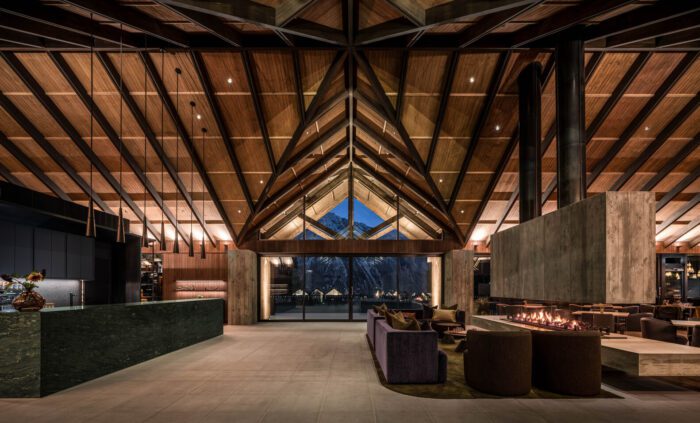
© Dennis Radermacher – Lightforge
Sugarloaf strikes a fragile steadiness between the constructed type and its pure context. Regardless of its scale, Sugarloaf is intentionally restrained to neither competing with the panorama nor overwhelming it. It’s rigorously positioned to border the panorama, exposing dramatic vistas upon entry and establishing a connection to the land as you journey by way of the area. A grand porte cochère attracts visitors in, subtly directing them in the direction of the spectacular, outsized copper doorways that provide the primary contact level, hinting on the stage of detailing and class that lies inside.
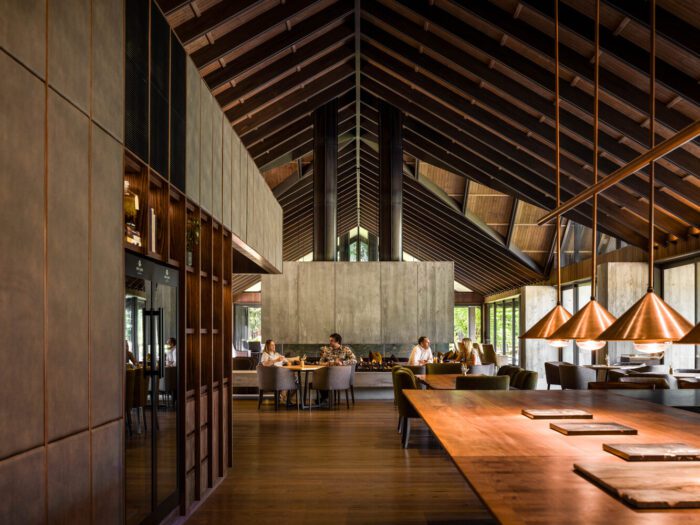
© Dennis Radermacher – Lightforge
Each ingredient, from the overarching constructing cloth to the smallest particulars, displays deliberate consideration. The intricate relationship between the constructed type, its supplies, finishes, and detailing creates a wealthy, layered tapestry of class and refinement, inviting exploration and discovery at each stage.
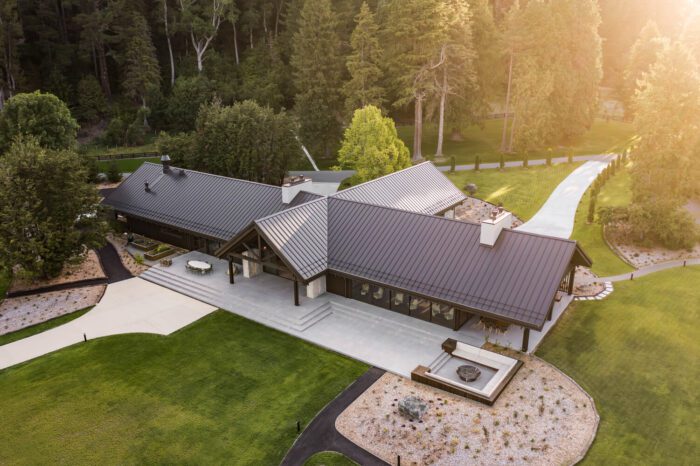
© Dennis Radermacher – Lightforge
Verticality serves as a guideline all through the design, mirrored within the timber and concrete detailing and emphasising the grandeur of the inside. Rhythm and symmetry strengthen this idea, evident in paired parts all through the area – adverse joinery detailing, double flues, sandwiched rafter particulars, and half-moon door handles for the facilities – designed as complementary halves.
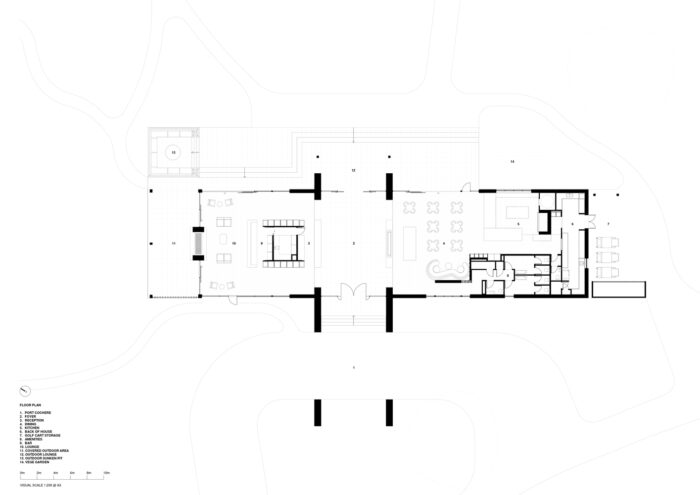
Ground Plan
The constructing options textured, uncooked, and sincere supplies to create an expertise that’s as sensory as it’s inviting. By way of cautious number of supplies, Sugarloaf is directly masculine and moody, but calm and embracing. Pared-back timber, concrete, and blackened metal are used each internally and externally. The ebony-stained Western Crimson Cedar cladding was chosen for its pure resistance properties – its subtlety taking a backseat to the unbelievable panorama inside which the restaurant resides.
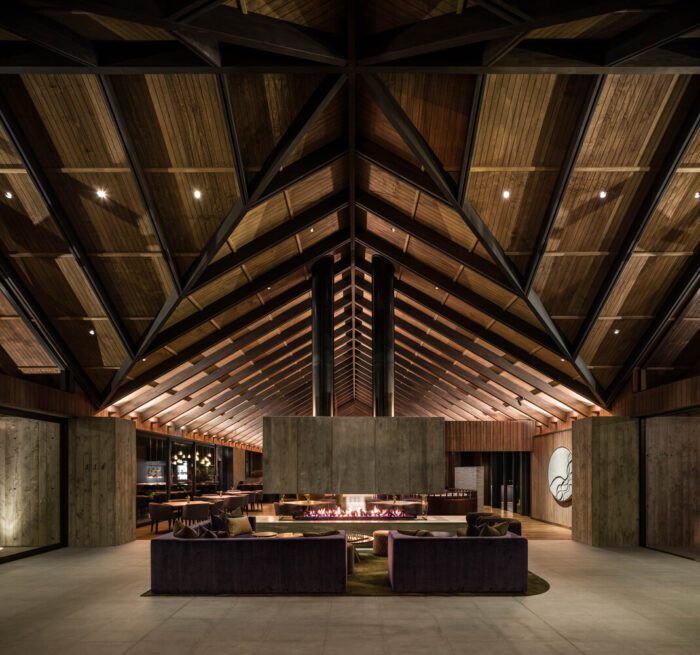
© Dennis Radermacher – Lightforge
Outsized copper doorways lead into an unlimited 7m excessive cathedral-style area that’s shrouded in timber, lending a heat and quiet calmness to the area. A monumental concrete hearth punctuates the area, suspended from the ceiling by engineered metal frames hidden inside the double flues. Stable stone was chosen for its pure and resilient end, with bluestone tiling underfoot and stone slabs moulded into counter tops – the intricate veining echoing the braided rivers of the rugged New Zealand panorama.
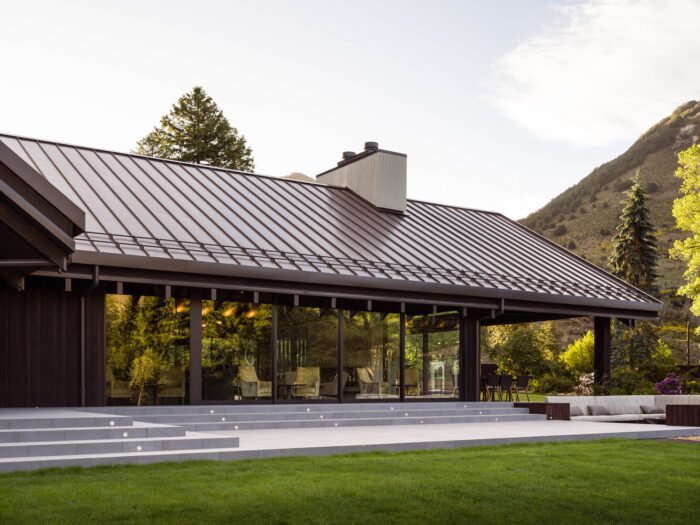
Sugarloaf at © Dennis Radermacher – Lightforge 15
The masculinity of the constructing is additional balanced by natural curves, launched by way of delicate furnishings and {hardware} picks. Delicate references to the encircling mountains are made by way of triangular shapes within the Tonka kitchen bench, copper warmth lamps, and delicate folds of the Bocci pendants. Sugarloaf was a business model construct, benefitting from the flexibility and effectivity of a concrete and metal substructure, clad in a high-quality grain of sturdy finishes all through. An array of sturdy supplies all through is purposely chosen to patina with time, with ease of upkeep a spotlight for administration employees.
Mission Information:
